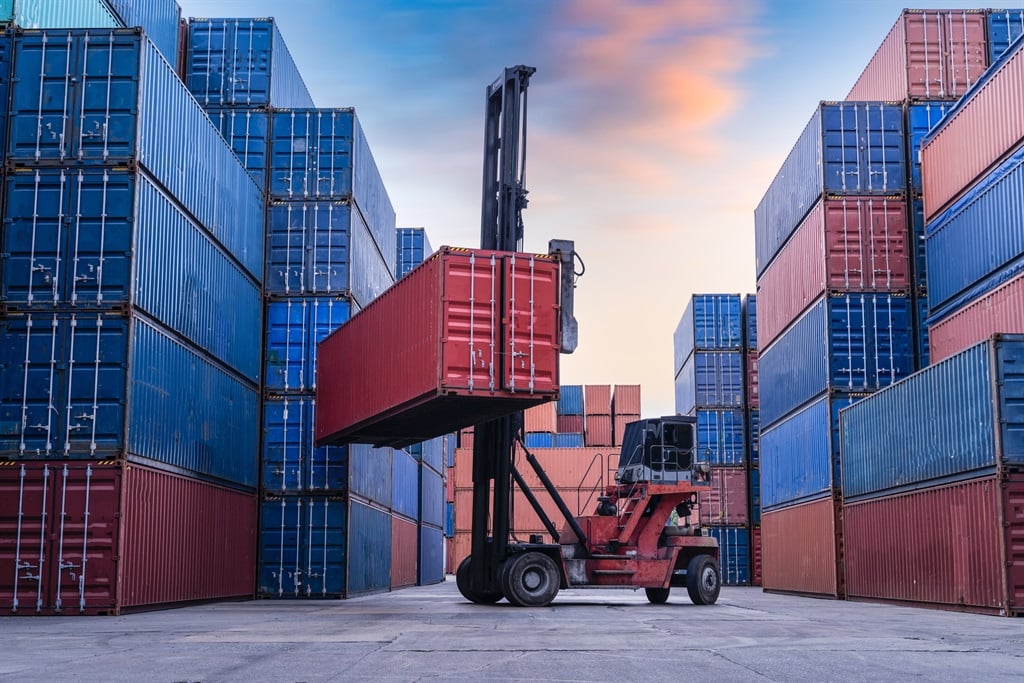
South Africa’s import-export sector stands at a pivotal crossroads. Verto’s latest white-paper, South Africa’s Playbook for Mastering Global Trade, dissects this landscape, urging businesses to transcend traditional strengths toward sophisticated strategies that blend digital innovation with sustainability.
At stake: a R164 billion export engine in early 2025, bolstered by automotive prowess and citrus vitality, yet shadowed by infrastructure snarls and the looming EU Carbon Border Adjustment Mechanism (CBAM). The report, drawing on recent trade data and fintech insights, charts a path for small and medium enterprises (SMEs)—the economy’s lifeblood and growth catalyst engine room, to thrive amid global trade volatility.
South Africa’s trade narrative defies simple headlines. While 2023 saw a slump to R150 billion in exports against R170 billion imports, preliminary 2024/ 2025 figures signal a positive recovery: value of R164 billion out imports versus R183 billion in export revenues, as per February’s data. This narrowing deficit (R19 billion) underscores resilience, with China, the US, Germany, and the UK as top trading partners.
Metals and Automotive Dominate
Precious metals, ores, and vehicles dominate the SA exports, while machinery, mineral fuels, and electronics flood inbound lanes. A strategic pivot toward the African Continental Free Trade Area (AfCFTA) yielded R48 billion in February exports alone, hinting at untapped regional gold. Indicative of the strength of the market in South Africa, South Africa’s exports were valued at more than $110 billion in 2024, accounting for nearly 20% of Africa’s total export revenue.
The automotive sector generated R202.8 billion in 2024 from vehicle and component sales, it underpins the South African Automotive Masterplan (SAAM), cementing SA’s role as producer of 50% of Africa’s vehicles. Stellantis’ new Eastern Cape plant exemplifies landmark investments, sustaining jobs and global chains. Yet, citrus—valued at over R33 billion and supporting 140,000 livelihoods—highlights vulnerabilities: its value chain, 94% export-oriented, demands hyper-efficient ports to avoid logistical erosion of 6% total value.
Trade Agreement Implementation Key to Trade Growth
Trade agreements form the bedrock of the export trade sector in the region, yet execution often lags, diminishing opportunities. AfCFTA promises to dismantle tariffs for 1.3 billion people across Africa, with the potential to unlock hurdles for and additional R13 billion in African trade. EU-SADC-EPA, SACU, and MERCOSUR frameworks grant access, but non-tariff barriers (NTBs) within SADC—spanning sanitary/phytosanitary (SPS) inconsistencies and customs delays are impeding seamless flow. The whitepaper calls for aggressive NTB removal via African Growth and Opportunity Act (AGOA) protocols by late 2025, diversifying markets beyond overreliance on the EU and US.
Strategic headwinds are however an ongoing concern. Port congestion and rail inefficiencies are choking the growth potential. A March 2025 RFI for rail/port revisions drew 162 responses, spotlighting Transnet bottlenecks from iron ore lines to Saldanha Bay’s container/auto corridors. Public-private partnerships (PPPs) could emerge as the fix should policy allow, shifting from state monopolies towards better services. Current upgrades to Durbans port a clear example.
External Factors Create Challenges
The white paper stresses that trade performance is increasingly shaped by factors outside the country’s control, from global “tariff wars” to climate pressures on agriculture.
Key challenges outlined include:
- Currency volatility: sharp movements in the rand erode profit margins and complicate cross-border pricing.
- Infrastructure bottlenecks: congested ports, unreliable rail, high road transport costs, and load shedding disrupt trade flows.
- Complex regulation: stringent exchange controls, compliance requirements, and cross-border approvals create delays and extra costs.
- Climate impact: erratic weather and droughts are already reducing crop yields and raising sustainability pressures from global buyers.
Opportunities Exist Despite Challenges
However, the white- paper also highlights opportunities that could reshape SA’s trade future:
- Regional expansion: tapping into the African Continental Free Trade Area to access a 1.3 billion-strong market.
- Market diversification: moving beyond reliance on the U.S., China, and Europe, and building stronger ties with Southeast Asia and Latin America.
- Agricultural growth: exporting high-demand products such as citrus, wine, and macadamias into new regions.
- Technology & sustainability: investing in renewable energy, advanced manufacturing, and ESG-aligned exports to stay competitive.
- Fintech solutions: using digital platforms to overcome cross-border payment barriers, reduce costs, and streamline compliance.
Fintech’s Role in Developments
In this challenging trade arena, fintech also emerges as a great equaliser. Verto, the report’s architect, pitches itself as the macro-micro bridge, providing market-leading FX rates and multi-currency wallets to slash volatility, eliminating legacy fees.
Their automated Balance of Payments (BoP) reporting transforms regulatory drudgery into assets, saving time and mitigating post-FATF greylisting scrutiny. For SMEs, 90% of formal businesses and 60% of labor challenges such as finance access and FX risk are often crippling. Verto’s API integrations democratize enterprise-grade tools, empowering seamless international payments and compliance.
With JET unlocking green wealth and fintech dissolving silos, South Africa’s exporters hold transformative power. But can policymakers and partners forge the urgent infrastructure and logistics reforms to turn this playbook into enduring economic building force?

